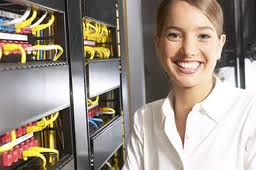My Blog List
-
Communication and Network14 years ago
-
Communication and Network14 years ago
-
Communication and Network14 years ago
-
COMMUNICATION AND NETWORK14 years ago
-
COMMUNICATION AND NETWORK
MODULATION
Is the process of varying one or more properties of high-frequency periodic waveform which is called the carrier signal. It enables the carrier signal to transport the information in the modulation signals to some destination.
DEMODULATION
Is the act of extracting the original information-- bearing signal from a modulated carrier wave
It is also easily attenuated and does not travel well through a machine structure.
BANDWIDTH
Or digital bandwidth a rate of data transfer, bit rate or throughput, measured in bits per second (BPS) or it can also mean
the amount of data that can be carried from one point to another in a given time ( USUALLY A SECOND) this kind of bandwidth is usually expressed in bits ( of data) per second (BPS)
TCP/IP (TRANSMISSION CONTROL PROTOCOL / INTERNET PROTOCOL
Is the communication protocol for the internet.TCP/IP defines the role computers must follow to communicate with each other over the internet
basically it is the communication language or protocol of the internet.
NODE
It is a connection point either a redistribution point or a communication endpoint. node definition also depends on the network and protocol layer referred to it can either be an active electronic device that is attached to a network and is capable of sending, receiving or forwarding information over a communication channel and it can be passive distribution point such as distribution frame or patch panel.
CLIENT
Is a n application or system that accesses a remote service on another computer system, known as a server by way of a network.
SERVER
Is a program that operates as a socket listener. The term server is also often generalized to describe a host that is deployed to execute one or more of such programs.
NETWORK OPERATING SYSTEM
It is referred to as the dialogues that runs on a server and enables the server to manage data, users, security, groups, application and other networking functions. It is also designed to allow shared file and printer access among multiple computers in a network
NETWORK ADMINISTRATOR
Is a person responsible for the maintenance of a computer hardware and software that comprises a computer network. This includes deploying configuring, maintaining and monitoring active network equipment. A network administrator may also design and deploy networks.
23:03 | | 0 Comments
SECONDARY STORAGE
DISK CACHING
It is a small amount of memory present on a hard drive used to cache reads and writers to the hard disk,and it is the most important type of cache on the PC.
FILE COMPRESSION
Is commonly used when sending a file from one computer to another over a connection that has limited band with. it makes the file smaller and therefor the sending of the file is faster.
FILE DECOMPRESSION
Is when you use tools to make a file takes up less space
INTERNET HARD DRIVE
Offers a mean of accessing your computer files ( pictures, documents, music, videos) from any computer as long as that computer has access to the internet.
OPTICAL DISK DRIVE
Is a disk drive that uses laser light or electromagnetic waves near the light spectrum as part of the process of reading or writing data.
SOLID STATE STORAGE
Is a data storage device that uses solid state memory to store persistent data with the intention of providing access in the same manner as a hard disk drive
06:36 | | 1 Comments
INPUT AND OUTPUT
ERGONOMIC KEYBOARD
Is a computer keyboard designed with ergonomic consideration to minimize muscle strain and a host of related problems. typically such keyboard are constructed in a V shape to allow right and left hands to type a slight angle more to the human form.
INKJET PRINTER
Is a type of computer printer that creates a digital image by propelling droplets of ink onto paper. they are the most commonly used type of printers
LASER PRINTER
Is a common type of computer printer that produces high quality text and graphics on plain paper. as with digital photocopiers and multifunction printers.
MAGNETIC-INK CHARACTER RECOGNITION
Is a character recognition technology used primarily by the banking industry to facilitate the processing of cheques. the technology allow computer to read information such as ( account number) off printed documents.
OPTICAL CHARACTER RECOGNITION
Is a mechanical or electronic translation of scanned image of handwritten, typewritten or printed text into machine encoded text. it is widely used to convert books and documents into electronic files to computer a record- keeping system in an office or to publish the text on a website.
OPTICAL MARK RECOGNITION
OMR devices work with a dedicated scanner device that shines a beam of light onto the form paper. the contrasting reflectivity at predetermined position on a page is then utilized to detect the marked area because they reflect less light than the book area of the paper.
06:32 | | 0 Comments



































